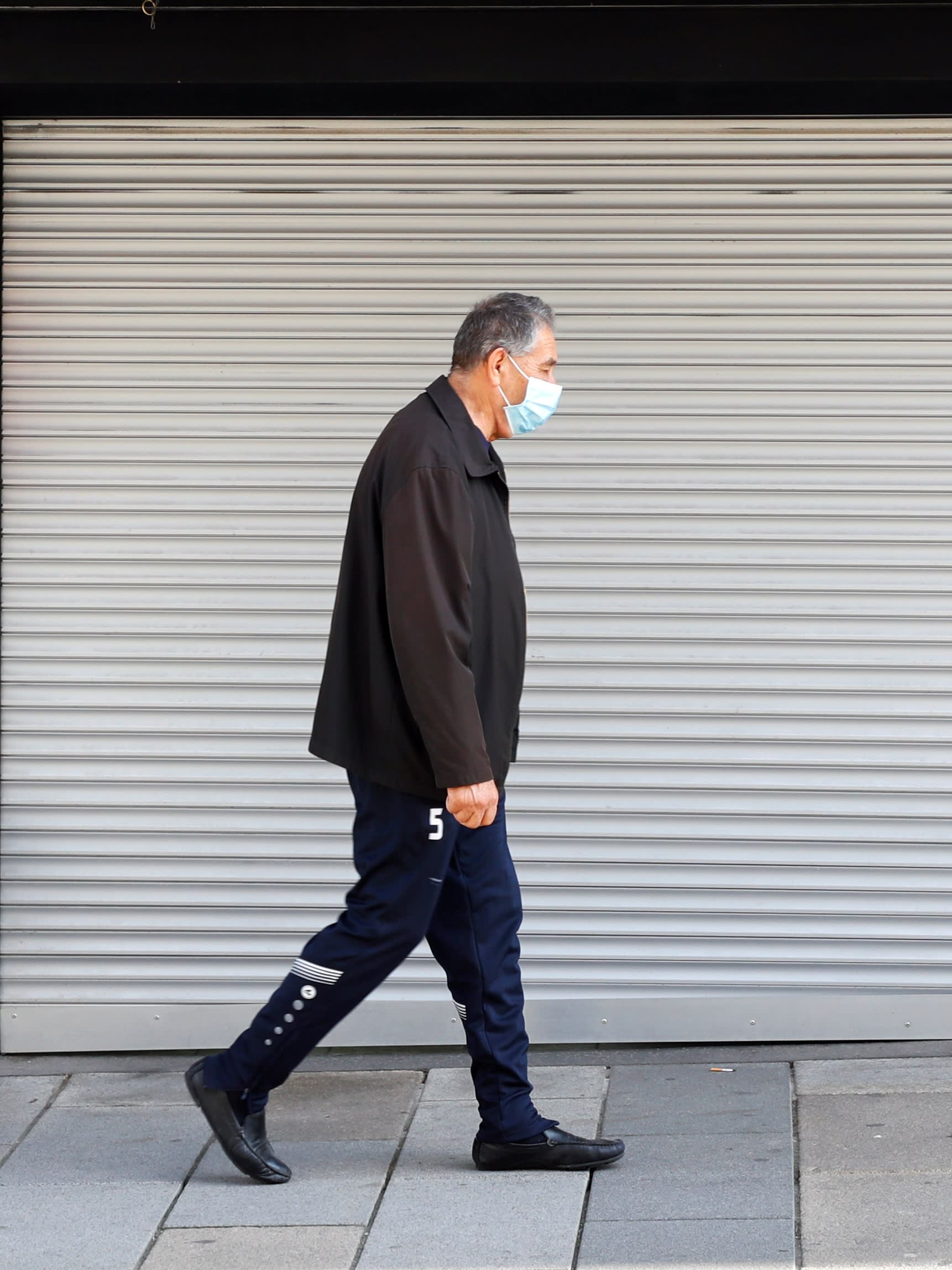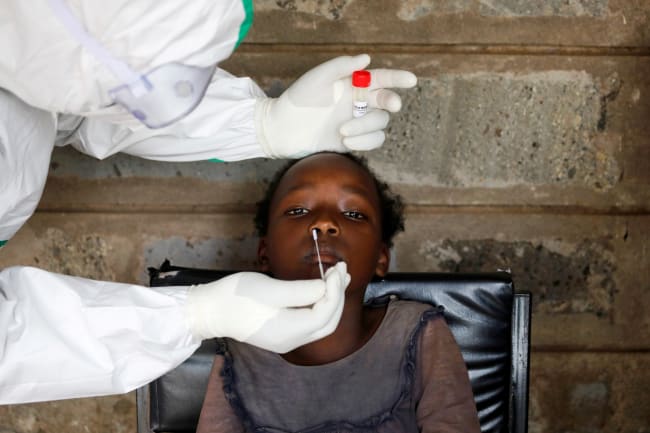The horrors of COVID-19 pandemic history are repeating: Accelerating infections and deaths. Overwhelmed hospitals. Heart-wrenching choices about who to treat. And this time, the situation around the world is even worse and more widespread. In many countries, nearly all the intensive care unit beds are occupied. England's National Health Service reports hospitals there are admitting more COVID-19 patients than they did during the spring surge. In Los Angeles County, bodies are piling up, oxygen is running low, and one hospital is so packed that it is treating some patients in its gift shop and chapel.
Are these situations avoidable? Yes. As countries around the globe work to contain COVID-19, we looked across Europe, the Middle East, and the United States to see which places appear to be doing better in protecting their hospitals from stress and saving lives. As of now, three disparate places jumped out to us—Austria, Saudi Arabia, and Minnesota.
Hospitals in Minnesota, Austria, and Saudi Arabia are expected to experience low- to moderate-stress levels between January and April
The Institute for Health Metrics and Evaluation (IHME), where we work, forecasts that hospitals in these locations are expected to experience low- to moderate-stress levels between January and April 1, 2021, with the exception of a short period of high stress on hospitals in Minnesota over several days in January, stemming from holiday gatherings. Stress levels are based on the percentage of total hospital beds that are filled by COVID-19 patients. These trends stand in contrast to other locations in the Middle East, Europe, and the United States, many of which are projected to experience high or extreme hospital stress between now and April 1, 2021.
The story in Austria and Minnesota is not uniformly positive, however. While stress on their total hospital beds has dropped to a moderate level, IHME's forecasts indicate that intensive care units will remain under high stress in Austria and high to extreme stress in Minnesota until February 2021. Still, Austria's and Minnesota's performance on preventing total hospital beds from filling up between now and April 1, 2021, makes them stand out compared to many of their peers.
What's more, when it comes to saving lives, Austria currently has a lower death rate from COVID-19 than many of its European neighbors.
Total COVID-19 Deaths in Europe per 100,000 People
As of January 4, Austria has lower rates of death from COVID-19 than many of its neighbors
Similarly, in the United States, Minnesota has fared much better than neighboring North and South Dakota. The COVID-19 death toll in Minnesota is 103 per 100,000 people, while it is 212 per 100,000 people in North Dakota (one of the highest death rates in the world), and 183 per 100,000 in South Dakota.
Total COVID-19 Deaths in the U.S. per 100,000 People
As of January 4, Minnesota has fared much better than neighboring North and South Dakota
Lessons Learned
Most places in the Northern Hemisphere are experiencing hospital stress. In contrast, Austria, Saudi Arabia, and Minnesota are not, with some exceptions. Why is that the case? What lessons can we learn from these three places?
Strive for Universal Mask Use
A large share of the population in Minnesota and Saudi Arabia uses masks, and the measures they've taken show there are multiple ways to do it.
In Minnesota, mask use is 76 percent, which is higher than many of its neighbors in the Midwestern United States, and higher than the national average of 74 percent. Mask use in Minnesota began to rise when Governor Tim Walz issued a mask mandate on July 25, 2020. IHME's research indicates that mask mandates increase mask use by an average of 8 percent. When that mandate was challenged in court in August 2020, mask use dropped. In September, as cases rose, and as a federal judge upheld Minnesota's mask mandate, mask use increased steadily.
In Minnesota and Saudi Arabia mask use is 76 percent and 75 percent, respectively
In Saudi Arabia, mask use is among the highest in the Eastern Mediterranean Region, at 75 percent. Saudi Arabia has used fines to enforce mask wearing. For every infraction, people not wearing masks in public can be fined $266 (1,000 Saudi riyals). Businesses can also be fined $2,662 (10,000 Saudi riyals) for allowing people to enter without wearing masks. After Saudi Arabia issued its mask mandate in May 2020, mask use increased 22 percentage points by December 2020.
In Austria, mask use is substantially lower than in Minnesota and Saudi Arabia, at 58 percent, but it has increased by 45 percentage points since July 2020. After initially lifting its mask mandate in June 2020, Austria re-introduced it in late July 2020 for supermarkets, banks, and post offices, extending the mandate to all indoor public spaces in September 2020.
We understand that enforcing masks could be controversial. We faced the same challenge with seatbelt laws. We made our roads safer for all only through enforcement.
Mask Use in the Eastern Mediterranean Region
As of January 4, mask use in Saudi Arabia is among the highest in the Eastern Mediterranean region
Social Distancing Mandates Stem the Tide
In addition to mask mandates, social distancing mandates are vital for protecting hospital systems.
As COVID-19 surged in Midwestern U.S. states this fall, Minnesota implemented a comprehensive set of social distancing restrictions that eased stress on hospitals and saved lives. As cases increased rapidly, Minnesota limited gatherings and closed post-secondary schools, bars, restaurants, and gyms. Hospitals in Minnesota were under high stress at the beginning of December, but that pressure decreased by the middle of the month as cases dropped dramatically.
In Saudi Arabia, gatherings over 50 people are restricted, and some businesses and all schools are closed
Austria has used social distancing mandates effectively to control the spread of COVID-19, and is currently in its third lockdown. The government has issued a stay-at-home order; limited gatherings; closed primary, secondary, and post-secondary schools; shuttered bars, gyms, and restaurants; and restricted border crossings and peoples' movements.
Saudi Arabia also implemented social distancing mandates to limit transmission, but these mandates have been more limited than the mandates in Austria and Minnesota. In Saudi Arabia, gatherings over 50 people are restricted, and some businesses and all schools are closed.
Best of Both Worlds
As COVID-19 continues to menace countries worldwide and a new variant of the virus creates anxiety, the solutions remain clear: Roll out vaccines as quickly as possible while continuing to encourage mask use and practice social distancing. Support citizens to adhere to these measures. In many countries, people depend on their daily income to buy food and have no financial reserves. Imposing mandates is only effective if people are empowered and supported to adhere to these regulations.

EDITOR'S NOTE: The authors are employed by the University of Washington's Institute for Health Metrics and Evaluation (IHME), which produced the COVID-19 forecasts described in this article. IHME collaborates with the Council on Foreign Relations on Think Global Health. All statements and views expressed in this article are solely those of the individual authors and are not necessarily shared by their institution.












